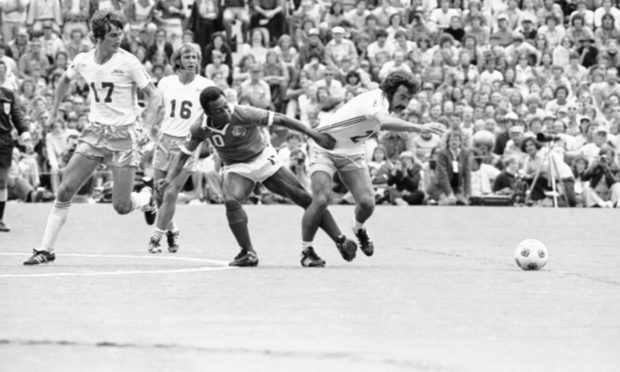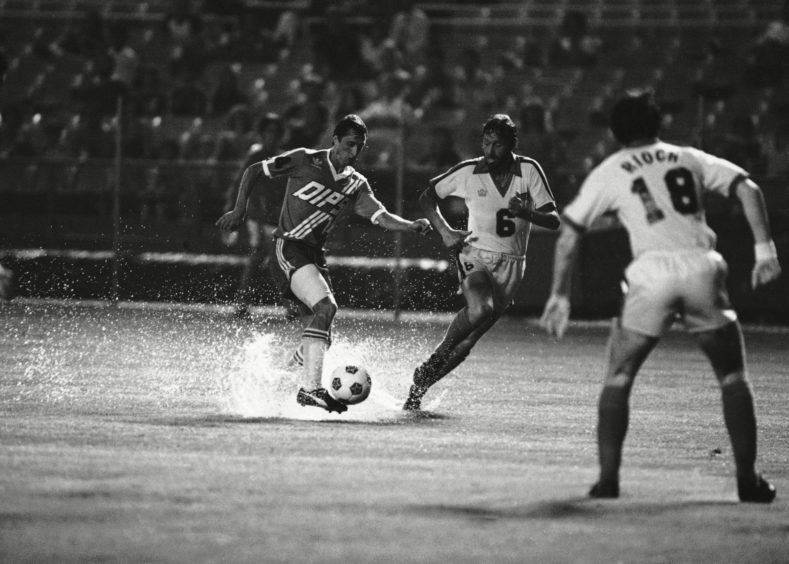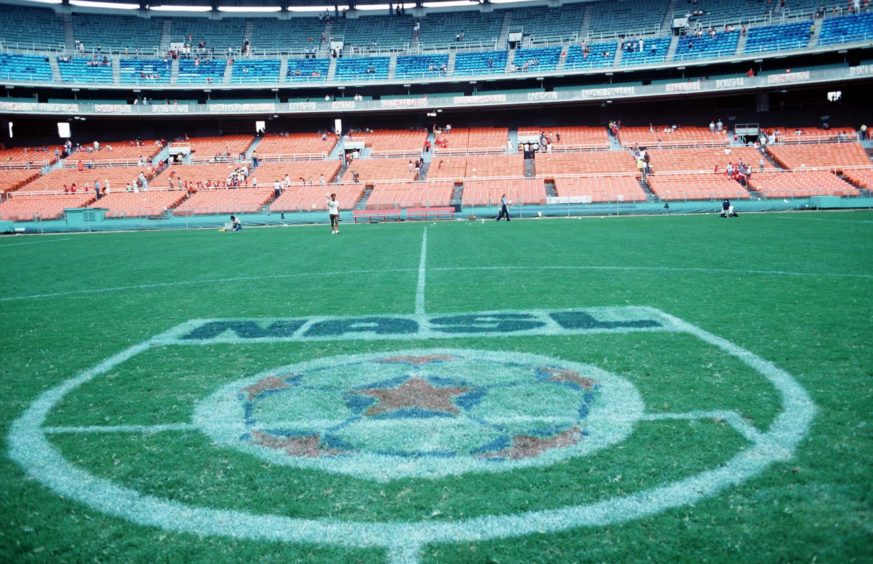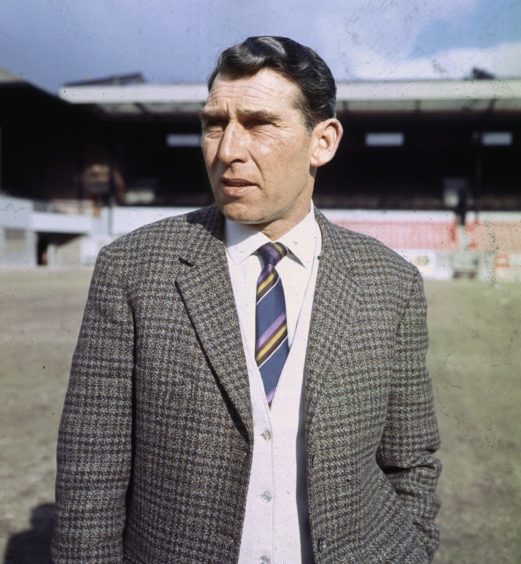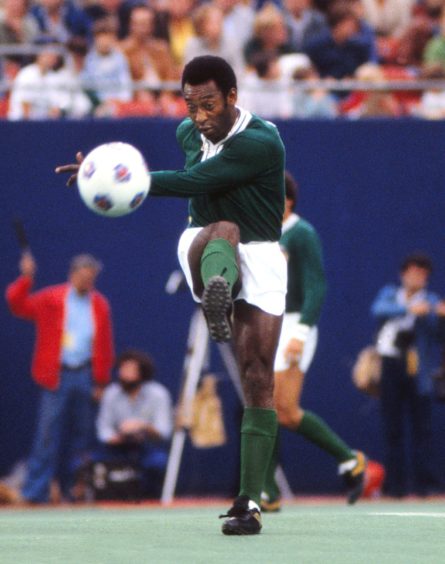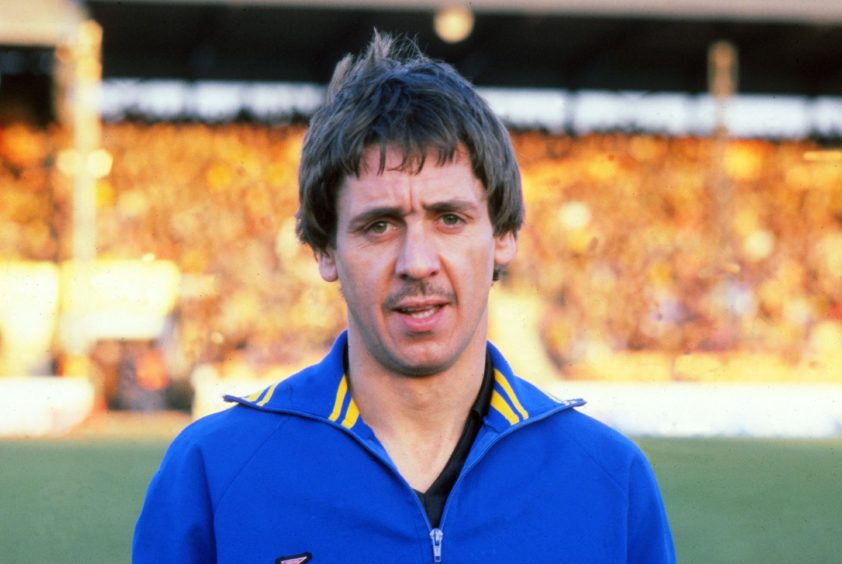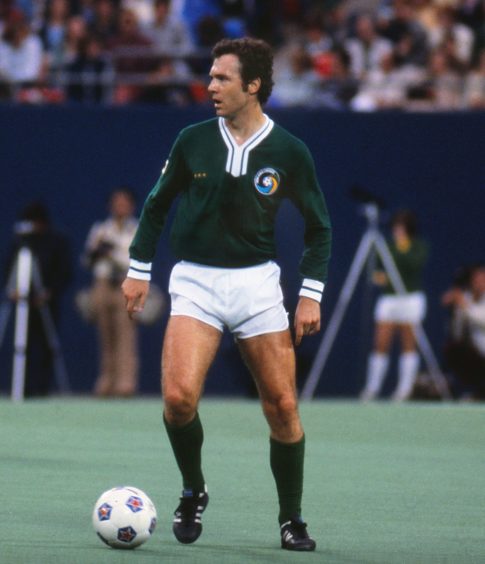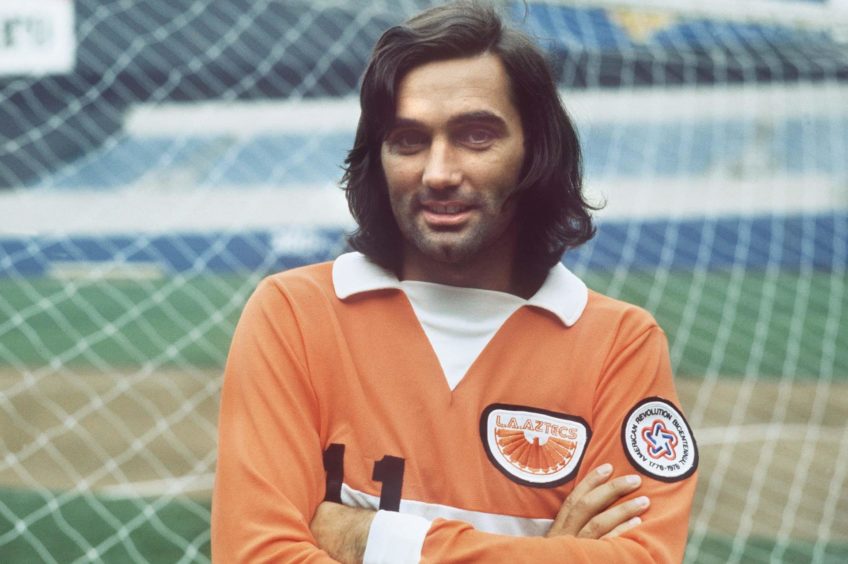Aberdeen and Dundee United took the USA by storm in the summer of 1967 and provided a kick-start for the birth of the North American Soccer League.
The links between the north and north-east of Scotland and soccer in America continued when the NASL gained momentum in the 1970s.
Jimmy Bone, Bobby Clark, Charlie Cooke, Jimmy Gabriel, Davie Robb and Jocky Scott were just some of the names who played in the league.
A whole legion of journeymen forged new careers in the NASL alongside superstars like Pele, Franz Beckenbauer, Johan Cruyff, Carlos Alberto and George Best.
Aberdeen and Dundee United represented US cities
Ian Plenderleith, author of Rock ‘n’ Roll Soccer: The Short Life and Fast Times of the North American Soccer League, said the fact that Dundee United and Aberdeen got to represent US cities in the summer of 1967 was something of a fluke.
He said: “Before the NASL kicked off in 1968 there were two rival start-up leagues looking to establish themselves – the United Soccer Association (USA) and the National Professional Soccer League (NPSL).
“The latter surprised the former by starting league play in 1967, so the USA decided not to risk waiting another year.
“However, they didn’t have the time to get teams together, so they just imported them wholesale from the UK, Ireland, Holland, Brazil, Uruguay and Italy.
“That’s how Aberdeen temporarily became the Washington Whips, and Dundee United the Dallas Tornado.
“An interesting novelty in the histories of both clubs, but hopeless for the development of football in the USA.
“Neither league was a complete failure, but they both quickly realised they couldn’t survive as competitors and merged to become the NASL the following year.”
Ten European teams, including Aberdeen and Dundee United, and two from South America, were invited to participate in the 1967 season.
Eddie Turnbull’s Reds won the Eastern Division and reached the President’s Cup final, losing to Los Angeles Wolves (Wolverhampton Wanderers) 6-5 after extra-time and over-time.
Bobby Clark, who played for the Dons from 1965 to 1980, was named first team goalkeeper in the 1967 United Soccer Association All Star Team.
Dundee United finished bottom of the Western Division with just three wins from 12 games although the average attendance at the Cotton Bowl was the second highest in the league.
United first wore tangerine shirts in America
The teams taking part in that 1967 tournament didn’t just take on the name of US clubs, they wore their kits.
The problem for United was that Tornado wore blue and white.
The desire not to be mistaken for Dundee led to United wearing tangerine.
The idea of importing teams to represent franchises was revived during the 1969 NASL season and Dundee United returned.
They linked up once again with Dallas Tornado and wore tangerine.
The colour proved popular and, after a suggestion by manager Jerry Kerr’s wife, Barbara, the Terrors swapped it for their traditional black and white kit.
Pele’s arrival at New York Cosmos in 1975 took things to new heights and resulted in greater TV exposure for the league.
Ten million people tuned in to watch the CBS live broadcast of Pele’s debut against the Dallas Tornado at Downing Stadium in New York.
A whole legion of players from Scotland also crossed the Atlantic to join the NASL and play for Uncle Sam.
Bobby Clark had just undergone knee surgery and he spent the summer of 1976 on loan with the San Antonio Thunder to get fit where he played with England World Cup winning captain Bobby Moore.
Jimmy Bone was top scorer for Arbroath between 1975 and 1977 before joining Toronto Blizzard on loan in 1979 where he played alongside Peter Lorimer.
Lorimer, who was born in Dundee, went on to play with Vancouver Whitecaps until 1983 before he returned to Leeds United at the age of 37.
Former Aberdeen and Dundee winger Charlie Cooke played for a host of US teams in the NASL including Los Angeles Aztecs, Memphis Rogues, Calgary Boomers, California Surf, Cleveland Force and the Dallas Sidekicks.
Ex-Dundee, Everton and Southampton player Jimmy Gabriel played for the Seattle Sounders for five years in the late 1970s and would go on to manage them.
Ex-Aberdeen player Davie Robb played for the Tampa Bay Rowdies, Philadelphia Fury, Tulsa Roughnecks and finally the Vancouver Whitecaps.
Brian Alderson became a New England Tea Man
Brian Alderson, who was born in Dundee, began his career with Lochee Harp before joining Coventry City and Leicester City.
In 1978 Noel Cantwell, who had managed Alderson during his spell at Coventry, invited him to play for the newly-formed New England Tea Men.
Alderson spent two years at the club before concluding his outdoor career with a two-year spell at the Atlanta Chiefs.
Former Scotland international Don Masson, who was born in Banchory, joined Minnesota Kicks in 1981.
The team belonged to Jack Dunnett, who also owned Notts County, and he played 24 games and scored two goals before the team went bust and folded.
Mr Plenderleith said: “There’s an obvious reason why Scottish players were attracted to the US in the 70s – money.
“Wages were nothing like the astronomical highs of today, but they were mostly higher than the Scottish league wages, and even if you only went over for the summer they could offer a really nice top-up.
“But that’s only part of the reason.
“When I talked to UK players for my book Rock ‘n’ Roll Soccer about their motives for playing in the NASL, they were much more focused on the life-style and cultural changes.
“Charlie Mitchell, who moved from St Mirren to play in Rochester, talked about being a local celebrity and that being recognised as a footballer was a pleasant experience, whereas in Scotland you’d get abuse from the crowd for every mistake.
“People would say stuff like, ‘Ach, I played against him at school and he was nae good’.
“Scotland and Everton midfielder Jimmy Gabriel loved the fans in Seattle because ‘they would get behind you 100 per cent the whole of the game, whether you won or lost’.
“In Britain they’d leave early if you were losing.
“I think the US represented a refreshing change from all the greyness and negativity of British life at that time.
“There’s a clichéd 70s view of muddy pitches, crowd trouble, lousy stadiums and dull tactics, but there’s a lot of truth to that stereotype.
“Flair players and mavericks like George Best and Rodney Marsh were starting to get kicked out of the game, or punished for their exuberant way of living.
“The US encouraged that kind of play, and those kind of characters – they needed them to make the league attractive and marketable. In the US they could express themselves on the pitch.
“There was a freedom from pressure that even the greats like Franz Beckenbauer really appreciated.
“That you could walk down the street like a normal person without getting hassled, that you could be yourself rather than always having to play the role of the sports star.”
Jocky Scott almost took the shine off Pele’s big day
Former Dundee and Aberdeen striker Jocky Scott enjoyed a successful spell in the NASL with the Seattle Sounders where he became a fan favourite.
Scott, who was recommended by former Dundee player Jimmy Gabriel, scored the goal which carried Seattle to the championship final of the NASL season.
A 1-0 win over the Los Angeles Aztecs and George Best set up a Soccer Bowl 77 date with New York Cosmos which was Pele’s final competitive match.
Seattle lost the final 2-1 but Pele’s swansong could have ended on a very different note.
Jocky said: “They were a team of world stars and, as well as Pele, they had Carlos Alberto, Franz Beckenbauer and Georgio Chinaglia, the Italian international.
“We had a couple of big names like Mike England and Jimmy Robertson but, for the most part, we were a team of free transfers and lower league players from England.
“But we had a good season and we were definitely unlucky in that final.
“I remember in the first half, when the score was either still level or we were just one down, I hit the bar with a shot from outside the box.
“Their keeper pushed the ball on to the bar and Tommy Ord ran in and headed home.
“The goal was chalked off for offside and we were furious.
“If it had counted, who knows what would have happened because we were doing well.
“The likes of Pele and Beckenbauer were past their best but they were still fantastic players to be up against.
“Pele couldn’t run any more but, when they got the ball to him, he was something to see.
“His touch was perfect and for all he wasn’t the biggest, when he got the ball he was so strong he wasn’t going to part with it until he wanted to.
“I played against him and the Cosmos three times that season and, when they came to Seattle, I scored the only goal to win the game.
“When we went to New York they gave us five but just being on the same pitch as these people is a special memory.
“Eventually, the problem for the NASL was for all the money they threw at it, not enough clubs got good crowds.
“But that season at Seattle we averaged 27,000 at our home games.”
In 1988, in exchange for FIFA awarding the right to host the 1994 World Cup, US Soccer promised to re-establish a professional soccer league.
The first season of Major League Soccer took place in 1996 with 10 teams and now comprises 27 – 24 in the US and three in Canada – and will expand to 30 by 2023.
EYEWITNESS: The forgotten story of how Dutch maestro Johan Cruyff almost played for Aberdeen
